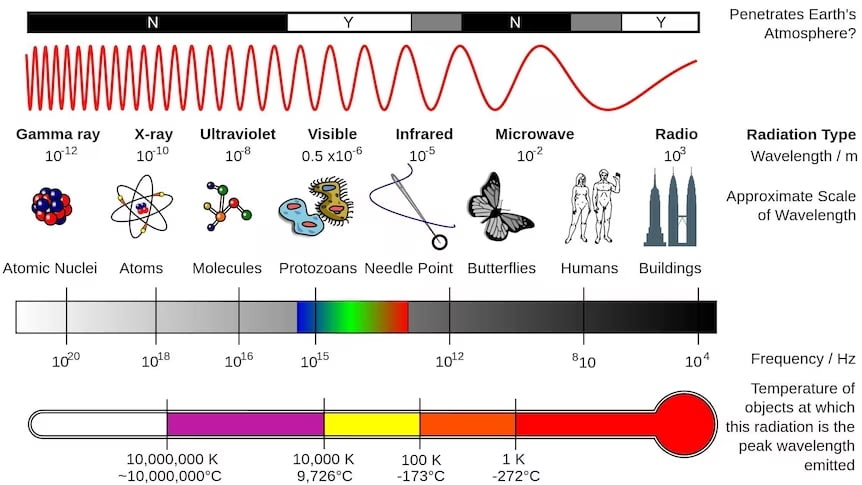- By Adele Clark
- • Last Updated
Infrared Contact Lenses: Revolutionary Vision in Darkness
Imagine having the power to see in complete darkness or even with closed eyes. Infrared contact lenses promise to revolutionize vision technology by allowing wearers to perceive infrared light, opening up new possibilities in security, rescue, and everyday visual enhancement beyond current capabilities.
Recently, Chinese scientists have successfully developed a type of contact lens that can help humans and mice see in darkness—potentially even with their eyes closed—marking a promising breakthrough in enhanced vision technology. This study not only paves the way for new directions in visual aid devices but also lays the foundation for numerous potential applications in security, rescue, and healthcare.
What is an Infrared Contact Lens?
In essence, an infrared contact lens is a wearable device resembling regular contact lenses but integrated with advanced nanotechnology. This allows users to see light in the infrared spectrum, which is typically invisible to the human eye. While humans can see light with wavelengths between 400–700 nm, infrared light lies outside of this range and is usually only visible through specialized equipment like night vision goggles.
Unlike traditional devices such as bulky night vision goggles that usually require external power sources and complex multi-layer structures incompatible with the human eye, this new lens operates without an external power source and is as light as commercial contact lenses. This marks the first instance where a device enabling vision in darkness has been incorporated into a compact, wearable format directly applied to the eye.
To create this lens, the research team meticulously screened a variety of biocompatible polymer materials, typically used in commercial contact lenses, to identify the optimal properties regarding refractive index, optical, and mechanical features. They then integrated upconversion nanoparticles, which convert infrared light to visible light, into this material. These nanoparticles not only convert infrared to visible light but are also engineered to provide color coding for different infrared wavelengths. This feature enhances detail differentiation and even supports color-blind individuals in accessing a broader range of spectral information.
Delving further, the research team fine-tuned both optical and mechanical properties to ensure the contact lenses are safe for the eyes and function stably. Critically, the whole procedure circumvents surgical or direct interventions on the eye, making this approach significantly more accessible for practical use compared to prior studies.
Experimental Results, Limitations, and Solutions
With this product, the research team conducted experiments on mice by placing them in two boxes: one completely dark and the other illuminated with infrared light. The results showed mice fitted with infrared contact lenses preferred the dark box, indicating they could “see” the infrared light. Additionally, their pupils constricted upon exposure to this light—a tangible sign of visual perception. Brain imaging of the mice further verified that the visual processing area was activated when exposed to infrared light.
Subsequently, the team continued experiments on humans by asking them to identify blinking signals and determine the direction of infrared light sources. The results indicated that only while wearing the special contact lenses did the volunteers successfully complete the tests, proving the lenses’ functionality on humans. Both experiments demonstrate that infrared vision is enhanced when human or animal eyes are closed, because infrared light penetrates eyelids better than regular light, opening up many new potential applications.
However, the current contact lenses still face issues with resolution due to light conversion becoming scattered when too close to the retina. To address this, the team developed a version incorporating regular eyeglasses with integrated nanotechnology, enhancing clarity by maintaining a greater distance between the lens and the eye. Additionally, the lenses currently only function with LED infrared light sources and lack sufficient sensitivity to detect weaker environmental infrared.
Potential Applications
Building on these initial successes, the research team is eager to expand applications into fields such as:
Secure communication: Using infrared light pulses to transmit encrypted messages in security or rescue operations.
Anti-counterfeiting: Printing infrared images on products for authenticity verification.
Color blindness support: Differentiating infrared wavelengths through unique color codes.
Enhancing rescue force vision: Facilitating clear vision in dark or smoke-filled environments.
Professor Tian Xue, a co-author of the study specializing in neuroscience, shared that this technology could open doors for non-invasive wearable devices, bringing ‘super vision’ capabilities to humans. In the future, coupled with advancements in materials and optics, the team envisions creating contact lenses with superior resolution and sensitivity.
Frequently Asked Questions (FAQs)
What are infrared contact lenses?
Infrared contact lenses are wearable devices similar to regular contacts but equipped with nanotechnology that enables humans to see infrared light, which is typically invisible to the naked eye.
How do infrared contact lenses work?
These lenses work by embedding upconversion nanoparticles into the lens material, which convert infrared light to visible light, allowing the wearer to perceive infrared as visible.
Why are infrared contact lenses significant?
These lenses could revolutionize vision assistance technology, providing enhanced vision in darkness and new applications in security, rescue, and healthcare.
What are some limitations of current infrared contact lens technology?
Current lenses have resolution issues due to light scattering and are limited to LED infrared light sources, reducing their effectiveness in identifying weaker infrared signals.
What potential applications do infrared contact lenses have?
They could be used for secure communication, anti-counterfeiting, aiding color-blind individuals, and improving vision in low-light or obstructed environments.




